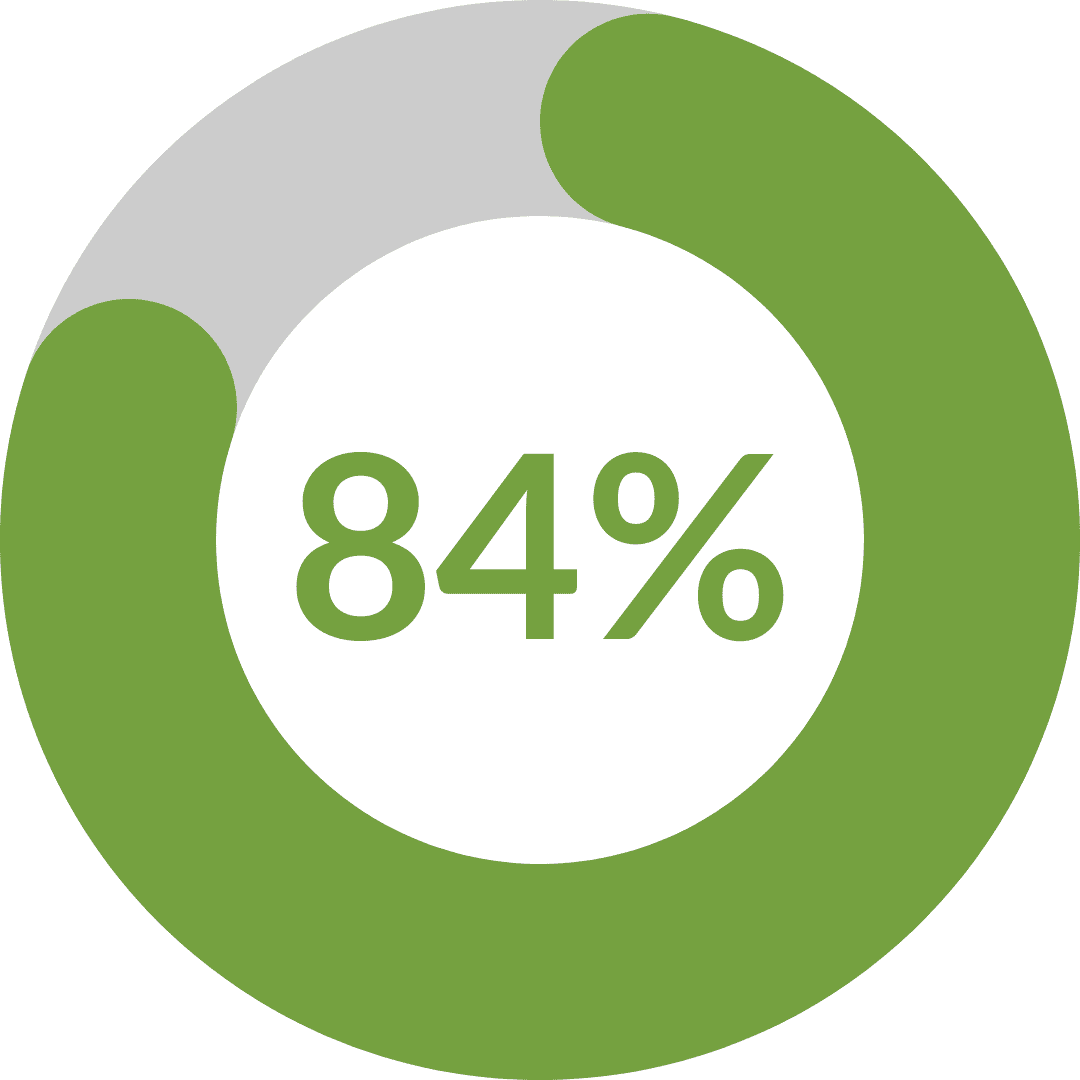Bold Brand Ideas: How Pilot Projects Can Pave the Way for Bolder Campaigns in 2025
Dentsu Creative’s 2024 CMO Report found that nearly 80% of US respondents think marketing drives business transformation and that creativity is more important than ever.
As marketers, we know the importance of creativity. We also know it’s our job to convince the C-suite that breaking the mold of “what’s always been done” yields results. We must unequivocally prove that creativity is crucial for reaching the next generation of consumers + buyers and link creative ideas to business outcomes.
Luckily, we have the data on our side:

of B2B marketers say creativity is the most important factor for success (MarTech).
Innovation is driving big results.
The bottom line is this: When your campaigns are memorable and exciting, your brand stays top-of-mind—and that’s what today’s B2B landscape demands. Seriously – a whopping 90% of buyers have a vendor in mind before even starting research.
This suggests a need to invest in awareness campaigns that shake up buyers’ consideration sets. It means getting comfortable with strategies that aren’t focused solely on sales. ROI might mean a lift in competitive share of voice or positive brand sentiment, not immediate revenue.
That’s a scary shift for teams that are evaluated on lead volumes or direct attribution.
So how do you get buy-in for upper-funnel strategies + creative campaigns?
Start with pilot programs. Pilots help you gather data to gauge feasibility, scalability and potential return. To be successful, it’s important to start small and stay focused.
For example, if B2B influencers are new to your team, try partnering with 2-3 creators to promote a priority or emerging product. Set clear goals with specific metrics attached. With influencers, you could set a goal to reach 20,000 millennial professionals within your industry who live in the Midwest. With tools and influencer-supplied metrics, you can track demographic, geographic and psychographic data to measure targeted awareness. You can also track engagement rates and other mid-funnel metrics to test how your approach might perform at scale. Pilots are great for setting benchmarks and gauging the ROI of a new tactic. They allow you to tie creative ideas to KPIs, making the case for increased spend.
That said, pilot campaigns shouldn’t live in a silo. To see the greatest ROI, cross-department collaboration is key. While a pilot campaign may be launched to increase targeted awareness, it can still benefit lead-gen goals + serve as a sales-enablement tool. Alignment across marketing, sales + PR teams can uncover opportunities to repurpose the campaign’s content and support each phase of the sales journey.
Are you testing strategies in 2024 to set yourself up for success in 2025?
Industry Insights: Why LinkedIn News Should be Part of Your Media Mix
With over 1 billion members, LinkedIn offers a vast and unique opportunity to showcase expertise that resonates with today’s discerning B2B buyers. These buyers, who increasingly prefer a sales-free experience, use LinkedIn to research, engage with industry insights and understand a company’s values before making any purchasing decisions.

of PR professionals have incorporated LinkedIn into their communications strategy, with 50% considering it the most valuable social platform (Muck Rack).
LinkedIn offers B2B buyers direct insight from industry leaders, creating an environment of expertise, collaboration and relationships.
In addition to individuals’ and companies’ LinkedIn posts, brands can expand their thought leadership with LinkedIn News. LinkedIn’s editorial division is run by 250 staff members, providing business, career and economic news to 190 countries. LinkedIn News summed up the benefits of their thought leadership center by saying: “We’ve found that business news shared directly by CEOs garners 8x impressions and 4x the engagement of other posts. So, not only does your news get featured in our coverage—but it spreads even further across LinkedIn.”

As traditional newsrooms shrink, social-first strategies are increasingly important. They create an opportunity to capture attention from the next generation of buyers – who lean on social media in their buying journey.
Getting featured in LinkedIn News is a different process than typical media pitching. Editors collect and curate stories from thought leaders on the platform. Building a content strategy for your executives – one that favors unique POVs and trend forecasting – increases the odds of editorial coverage. To pique interest, consider these tips:
- Get Ahead of Trending Conversations: LinkedIn News thrives on timely, relevant content that professionals are already talking about. Check out what’s trending in your industry and on LinkedIn News itself. Draft content that connects your company’s POV to these broader conversations, offering a fresh perspective or deeper insight that professionals haven’t heard yet.
- Show Up with Data and Thought Leadership: LinkedIn’s audience craves content that’s both informative and actionable. The editorial team is more likely to pick up stories backed by solid data or featuring a compelling opinion from an industry leader. If you can weave in original research, powerful stats or expert commentary, your post will resonate more with the editors and ultimately their readers.
Is LinkedIn News part of your strategy?
Goals: Brand Building vs. Performance Marketing’s Role in Lead Generation
My favorite debate is spiking again: brand building vs. performance marketing – which is more important to drive business growth? At this point in the blog, you probably know which team I’m on.
In recent years, there has been a noticeable shift towards performance marketing, driven by the pressure to deliver immediate results. While performance marketing offers short-term and measurable returns, long-term success hinges on fostering relationships rooted in trust and credibility.
This is especially true in the B2B world where sales cycles are long and products/services are often complex.
Brand authority, IMO, is the cornerstone of successful B2B + B2C strategies. In a crowded marketplace, being perceived as a trusted industry leader can set a company apart from its competitors.
This requires a consistent investment in brand-building activities like earned media, LinkedIn thought leadership, speaking engagements and creative campaigns (see previous sections). When done right and consistently, brands begin to establish themselves as authoritative voices – sought-after experts – in their respective industries.
But because brand authority doesn’t happen overnight, many brands opt for traditional tactics that are immediately measurable (think: e-mail drip campaign metrics, digital advertising, etc.).
Yet, the true strength of a brand often lies in those less tangible elements—its reputation, the quality of its relationships, and the trust it has earned over time.
Consider IDEAL Industries’ recent Sneak Peek Sweepstakes [client]. Rather than host trade show-style demos + booths (traditional marketing), IDEAL created an energizing and explorative experience for top social voices in electric trades.
These influencers represented the next gen of electricians – a group who is known for brand loyalty but only when affinity and trust is established first. While product sales were a consideration, IDEAL recognized value in building relationships with its emerging customers, who are key to long-term success.
During the Sneak Peek, attendees engaged in hands-on challenges (including an electrical-themed Olympics), shared feedback in 1:1 focus groups and connected with other passionate electricians. The Sneak Peek was designed to create an enjoyable brand experience that (1) built relationships with key audiences and (2) showcased IDEAL’s expertise + reputation.
Following the Sneak Peek, attendees’ sentiment was overwhelmingly positive, pointing to a successful brand-building initiative that will support future sales.
The takeaway? Both performance marketing and brand-building strategies play an important role in the buyer’s journey. Understanding the impact of each touchpoint provides a more comprehensive view of marketing effectiveness.
How are you balancing brand building and performance marketing?
DEI Download: The Link Between DEI Initiatives and Inclusive Marketing Campaigns
More than half of B2B marketing leaders report that their organizations have increased investment in DEI initiatives over the past year.
LinkedIn’s 2024 B2B Marketing Benchmark Report reported:
- 50% of respondents said their investment in DEI talent recruitment/hiring has increased
- 47% of respondents said they’re investing more in DEI training + learning
- 44% of respondents said their company is prioritizing inclusive cultures
Internal investments are trickling outwards, too. Nearly 80% of respondents said their marketing campaigns are more inclusive and diverse. This is no coincidence.
Diverse marketing teams bring different perspectives. They help to avoid blind spots and create messaging that is appropriate, authentic and resonates. We can assume these efforts are paying off, as 60% of companies plan to further expand their DEI initiatives. Businesses that continue to invest have a strategic advantage as we navigate increasingly complex and competitive markets – made up of increasingly diverse consumer bases.




